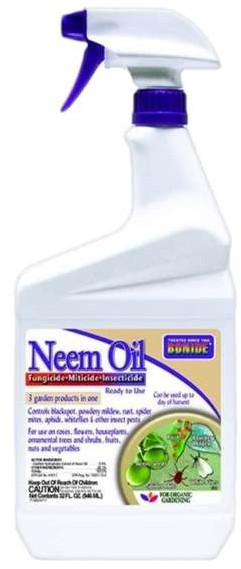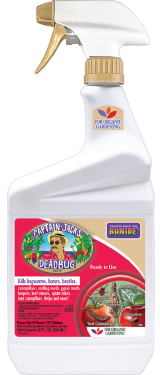Solutions for Common Garden Pests
Garden Pests
Garden pests such as cucumber beetles, tomato hornworms, and cut worms can ruin the months of hard work you put into your garden in a matter of days. There are a variety of solutions to preventing and eradicating these pests, many of which the Essex County Co-Op sells!
 There are two types
of cucumber beetles, one of which is striped and one of which is spotted. The
beetles are similar in size and shape, being about 1/5 of an inch long and
oblong in shape. They are both predominantly yellow with black heads and
antennae. The main difference is the markings on their wings, which are either
stripes or spots. The larvae of both species are similar, and are small and
creamy white. The eggs are yellow and laid in groups. Cucumber beetles feed on
the blossoms of flowering plants, then mate and lay eggs in the soil at the
base of cucurbits (cucumber, squash, melon, etc.) Eggs hatch several weeks
after they are laid and larvae feed on the roots and underground stems. Larvae
transform to pupae in the soil and emerge as adults later in summer to feed on
foliage, thus restarting the process. There is generally only one generation
per year, however, these pests can overwinter in soil.
There are two types
of cucumber beetles, one of which is striped and one of which is spotted. The
beetles are similar in size and shape, being about 1/5 of an inch long and
oblong in shape. They are both predominantly yellow with black heads and
antennae. The main difference is the markings on their wings, which are either
stripes or spots. The larvae of both species are similar, and are small and
creamy white. The eggs are yellow and laid in groups. Cucumber beetles feed on
the blossoms of flowering plants, then mate and lay eggs in the soil at the
base of cucurbits (cucumber, squash, melon, etc.) Eggs hatch several weeks
after they are laid and larvae feed on the roots and underground stems. Larvae
transform to pupae in the soil and emerge as adults later in summer to feed on
foliage, thus restarting the process. There is generally only one generation
per year, however, these pests can overwinter in soil.
Squash bugs feed on the same plants as cucumber beetles, however, they look very different. Squash bugs are large, flattened insects that are dark grey to dark brown. Squash bugs can overwinter in covered places, such as under rocks or plant debris. When they reemerge in the spring, they fly to growing cucurbits to feed and mate. Females lay eggs on the underside of leaves throughout the summer, which hatch in about ten days.
While these pests cause plant damage due to their feasting on the plant, cucumber beetles also carry the bacteria that causes bacterial wilt. Bacterial wilt infects the plants vascular system, causing the plant to wilt. Once infected, the plant cannot be saved. Bacterial wilt is easily spread from plant to plant, as anything feeding on the plants will transfer it to the next plant they eat. Wilting spreads rapidly, and the plant will often wilt and discolor prior to dying. To check if your plant is infected with bacterial wilt, take a stem that exhibits signs of bacterial wilt and cut it in half. Hold the ends together for 15 seconds and slowly pull them apart. If bacterial wilt is present, a whitish bacterial ooze will form a mucoid string between the two cut ends.
 Protecting your
garden from cucumber beetles is easier than eradicating them. You should begin
checking for cucumber beetles early, as you will have a better chance at
preventing damage and bacterial wilt. You should keep your garden clear of
debris and weeds, as this can be a potential host area. Using trap crops can
help to lure plants from your main garden plants. To use this method, plant a
few highly attractive cucurbits in a location other than your garden prior to
planting your garden cucurbits. Once the beetles have started feasting on these
plants, treat them with a pesticide to prevent further movement. Additionally,
you can implement physical barriers, such as a row cover, to prevent cucumber
beetles from gaining access to your plants. Lastly, you can use pesticides,
however, you should choose one that has little impact on insects that are
beneficial to your garden, such as ladybugs and pollinators. Bonide Neem Oil is
an example of this, as it prevents insects from feeding, which eventually kills
them. While neem oil is an organic solution, pyrethrins can also be used,
however, they are generally less effective because they need to come into
contact with the beetles to kill them.
Protecting your
garden from cucumber beetles is easier than eradicating them. You should begin
checking for cucumber beetles early, as you will have a better chance at
preventing damage and bacterial wilt. You should keep your garden clear of
debris and weeds, as this can be a potential host area. Using trap crops can
help to lure plants from your main garden plants. To use this method, plant a
few highly attractive cucurbits in a location other than your garden prior to
planting your garden cucurbits. Once the beetles have started feasting on these
plants, treat them with a pesticide to prevent further movement. Additionally,
you can implement physical barriers, such as a row cover, to prevent cucumber
beetles from gaining access to your plants. Lastly, you can use pesticides,
however, you should choose one that has little impact on insects that are
beneficial to your garden, such as ladybugs and pollinators. Bonide Neem Oil is
an example of this, as it prevents insects from feeding, which eventually kills
them. While neem oil is an organic solution, pyrethrins can also be used,
however, they are generally less effective because they need to come into
contact with the beetles to kill them.
Tomato hornworms predominantly feed on tomatoes and tomato plants, however, these worms will also feed on other plants in the nightshade family, such as peppers, eggplants, or potatoes. These worms come from moths that lay their eggs on the bottom side of the leaves, and the eggs hatch within a week. The larvae feed for several weeks, soon creating a cocoon and overwintering in the soil to start the cycle again in the spring. Hornworms can be up to five inches long, which can be quite a surprise, and they do the most damage at the larval, or caterpillar stage. These worms have a prominent horn protruding from their rear, and pale white and black markings.
Hornworms tend to start feeding at the top of the plant, so if you see missing or chewed leaves at the top of the plant, you should investigate. If the tops of the leaves have dark green or black droppings, check underneath the leaf for a caterpillar. If you have tomato hornworms on your plants, you can remove them by hand as they cannot bite nor sting. You must, however, kill these pests after removing them, either by squishing them or putting them in soapy water. Insecticidal soap, such as Bonide Insecticidal Super Soap, will only kill hornworms if it comes in contact with, making preventing hornworms easier than eradicating them. Captain Jack’s Dead Bug Brew is also effective, as it contains a natural bacteria called Spinosad. Spinosad can be used up until the day of harvest. You can also apply BT, as BT is a bacterium that kills soft-bodies insects and their larvae. The best preventative method is to till the soil at the beginning and end of the growing season to eradicate any larvae in the soil, and keep gardening areas free of debris which could harbor hornworms in any stage of the lifecycle.
Cutworms are similar to hornworms in the aspect that they eat plant stems, causing the plant’s demise, however, they are very different than tomato hornworms. The eggs that produce these worms are laid by the cutworm moth, which follows a similar life cycle as the tomato hornworm producing moth. These worms are smooth with very few hairs, and are about two inches long when fully grown. They typically curl in to a tight ‘C’ shape when disturbed. Cutworms take shape in a variety of colors including brown, pink, green, gray, and black, and can be patterned or pattern less.
Cutworms are a nonselective worm, meaning they can attack a wide variety of plants. Common vegetables they feed on are asparagus, beans, peppers, tomatoes, cabbage, and corn. Cutworms curl their bodies around the stem of the plant and feed on it, cutting the plant off just above the soil. These pests hide in debris during the day and feed in the evening or night. The damage is the most severe in the early season when plants are young and have more tender stems. While cutworms are active in the summer, they are rarely a threat to plants after spring.
Similarly to hornworms and many other garden pests, prevention is easier than remediation. You can hand pick these worms off of plants by using a flashlight at night, however, it is imperative you kill them after removing them. You can also surround the plant stems with diatomaceous earth, which is considered an organic method of removal. Diatomaceous Earth is made from ground diatoms which get within insect exoskeletons, eventually dehydrating and killing them. While diatomaceous earth is a natural solution, applying BT (Bacillus thuringiensis) in the afternoon is also affective. as BT is a bacterium that affects soft-bodies insects and their larvae. Bonide Thuricide is a BT concentrate that could be used to kill cutworms. If you’re looking for a ready to use product, Bonide Eight Flower and Vegetable Soil Insect Granules are an option, as the granules kill a variety of surface and subsurface insects. If you have cutworms eating your corn, Spectracide Triazicide can be applied no more than five times per growing season.
Are you still unsure of what is munching on your garden
plants? Come see the staff at the Essex County Co-Op for advice and products to
help you combat your garden munchers.


